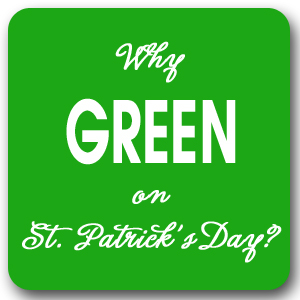Gallery
Photos from events, contest for the best costume, videos from master classes.
 |  |
 |  |
 |  |
 |  |
 |  |
 |  |
Today, wearing orange on St. Patrick’s Day can symbolise Protestant heritage or solidarity with Northern Ireland. The colour orange has been closely tied to Ireland’s Protestant community since way back in 1690. The color orange represents the sizable Protestant population within Ireland, and the green symbolizes Roman Catholicism, the religion that originally invented the holiday. Nonetheless, St. Patrick’s Day was co-opted by Protestants, who opted to don their representative orange instead of green for the day. Is it OK to wear orange on St Patricks Day? Catholics [] The color orange represents the sizable Protestant population within Ireland, and the green symbolizes Roman Catholicism, the religion that originally invented the holiday. Nonetheless, St. Patrick’s Day was co-opted by Protestants, who opted to don their representative orange instead of green for the day. Is it offensive to wear orange on St Patricks Day? Is [] In Ireland, Roman Catholics wear green. But Protestants, however, wear Orange (in honor of William of Orange, the great Protestant king). So when you go to that St. Paddy’s day celebration, wear orange and explain to people why; it’s a good opportunity to share the Gospel. [Editor’s Note: Read more here] So far, I haven't heard of a joint Green-Orange celebration of St Patrick's Day in Ireland. The two traditions are seemingly staying separate in how they mark the 17th of March. In 2005, there was almost a St Patrick's Day Orange Order parade in Cork, by invitation of this city bastion of Irish nationalism. It's considered bad to wear orange on St. Patrick's Day because the color orange is associated with the Protestant community in Ireland, particularly with the Orange Order, which commemorates the victory of Protestant King William of Orange over the Catholic King James II in the Battle of the Boyne in 1690. Therefore, on St. Patrick’s Day, Protestants protest by wearing orange instead of green. Ironically, no one wears white; the placement of the white stripe between the green and orange stripes on the Irish flag is supposed to symbolize the peace between the Roman Catholic majority and the Protestant minority. Wearing orange can symbolize our desire for harmony and peace within the Christian community, transcending historical divisions. St. Patrick, the patron saint of Ireland, is celebrated for bringing Christianity to the Irish people. His message was one of love, faith, and conversion. Wearing orange on St. Patrick’s Day, even if unintentional, could be interpreted as a sign of support for Protestant unionism, potentially causing offense or misinterpretations. It’s a subtle point, but awareness of this history is crucial for navigating St. Patrick’s Day celebrations respectfully. On St. Patrick’s Day, a traditional Irish holiday celebrating St. Patrick, the patron saint of Ireland, some people wear orange instead of the typical green attire. This decision is often based on the individual’s religious or political beliefs and their connection to the Protestant community. According to this increasingly popular tradition, Protestants wear orange and leave green attire to Catholics. Thus, the color you wear actually depends on your religious affiliation. While this To understand why some people wear orange, you first have to understand why people wear green. St. Patrick's Day is a Roman Catholic holiday that was first celebrated in Ireland starting in 1631. SHREVEPORT, La -- March 17 marks Saint Patrick’s Day, and the tradition is familiar to all as the color green rules the day. But not all people wear green on St. Paddy’s Day. Wearing orange on St. Patrick’s Day represents a different shade of celebration, symbolizing the Protestant faith and highlighting the complex history and diversity of Irish culture. St. Patrick’s Day usually conjures images of partying, Catholicism, Irish nationalism and, perhaps most famously, the color green: green clothes, green shamrocks, green beer and green rivers. To understand why some people wear orange, you first have to understand why people wear green. St. Patrick's Day is a Roman Catholic holiday that was first celebrated in Ireland starting in 1631. Therefore, on St. Patrick’s Day, Protestants protest by wearing orange instead of green. Ironically, no one wears white; the placement of the white stripe between the green and orange stripes on the Irish flag is supposed to symbolize the peace between the Roman Catholic majority and the Protestant minority. William of Orange’s victory over the Catholic King James II solidified Protestant dominance in Ireland. The orange sash worn by the Protestant Orangemen became a symbol of this victory and Protestant identity. Some are Protestant and wear orange to honor William of Orange, a Protestant who deposed King James II, a Roman Catholic, in 1688. The national flag of Ireland represents both religions. The color orange represents the sizable Protestant population within Ireland, and the green symbolizes Roman Catholicism, the religion that originally invented the holiday. Nonetheless, St. Patrick's Day was co-opted by Protestants, who opted to don their representative orange instead of green for the day.
Articles and news, personal stories, interviews with experts.
Photos from events, contest for the best costume, videos from master classes.
 |  |
 |  |
 |  |
 |  |
 |  |
 |  |